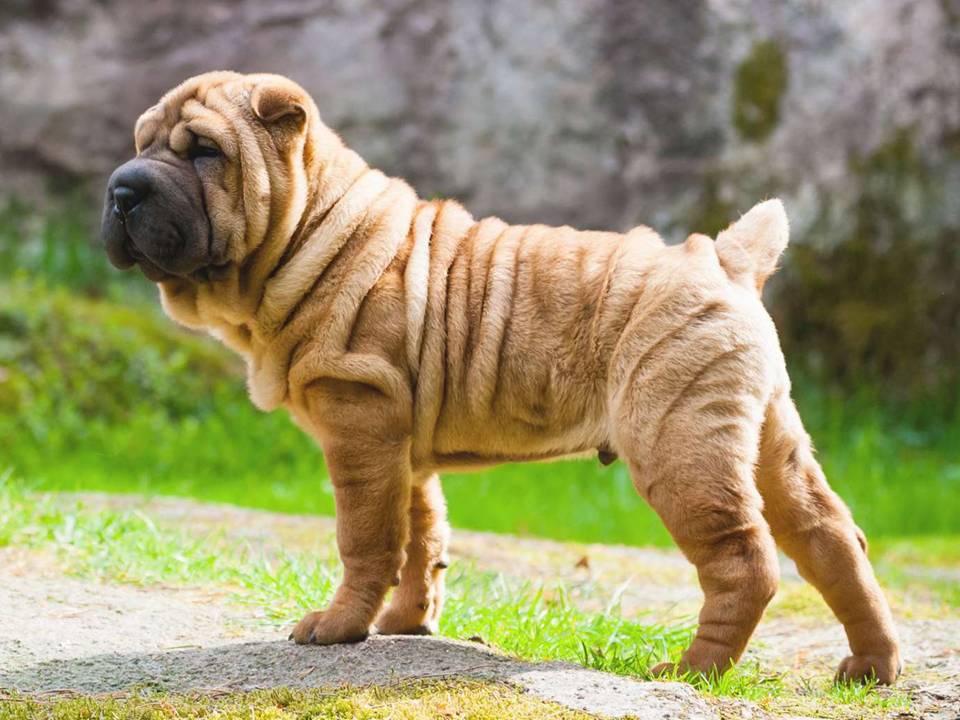One of the Most Ancient and Distinctive Dog Breeds in the World
The Chinese Shar-Pei is one of the oldest and most unique dog breeds. Its deeply wrinkled skin, broad muzzle, and blue-black tongue make it easily recognizable. This breed has a history that goes back over two thousand years. Originating in ancient China, the Shar-Pei has evolved from a working dog to a beloved companion. This essay explores its history, roles in Chinese society, decline, and resurgence.
Early Origins
The Shar-Pei dates back to the Han Dynasty (206 BCE – 220 CE). Ancient texts and archaeological evidence show that people bred it for practical purposes. Farmers used Shar-Peis for hunting and guarding. The name “Shar-Pei” means “sand-skin,” referring to its course, bristly coat. This coat helped protect it in fights with wild animals and other dogs. The breed’s wrinkles also provided protection by making it harder for opponents to grip them.
This breed was most common in southern China, particularly in Guangdong province. Farmers relied on Shar-Peis to guard livestock and homes. They also used them for hunting boar. Their medium-sized bodies, intelligence, and loyalty made them excellent working dogs.
Roles in Ancient Chinese Society
Shar-Peis served as guard dogs and hunters. However, people also bred them for dog fighting. Their loose skin, broad heads, and muscular frames made them suitable for combat. Despite this, Shar-Peis were not naturally aggressive. They remained calm, loyal, and affectionate towards their owners.
Farmers and peasants highly valued Shar-Peis. Their resilience and low maintenance needs made them ideal for rural communities. Unlike some breeds reserved for nobility, the Shar-Pei was a “people’s dog.” It was common across southern China.
Near Extinction
The 20th century brought a crisis for the Shar-Pei. The Communist Revolution of 1949 discouraged dog ownership. Authorities saw dogs as unnecessary luxuries. Many Shar-Peis were abandoned or euthanized, causing their numbers to plummet.
The Chinese Civil War made things worse. Widespread famine and poverty left little room for keeping dogs. By the 1950s, the Shar-Pei was nearly extinct. Only a few remained in rural China and Hong Kong.

The Breed’s Resurgence
The Shar-Pei’s revival is a remarkable story. In the 1970s, Hong Kong breeder Matgo Law realized the breed was in danger. He made an international plea for help. In 1973, the American magazine Dogs published his appeal. Dog lovers in the U.S. took notice.
Breeders imported Shar-Peis to the United States. Their unusual look and rarity made them highly desirable. By the 1980s, their population had grown significantly.
The American Kennel Club (AKC) officially recognized the breed in 1992. Breeders worked to reduce health issues related to its wrinkled skin. Today, while still uncommon, the Shar-Pei has a loyal following.
The Modern Shar-Pei
Today, most Shar-Peis are companion dogs. They retain their loyalty, intelligence, and independence. Unlike many breeds, they can be aloof with strangers. However, they form strong bonds with their families.
Shar-Peis still make excellent guard dogs. They are protective but not aggressive unless provoked. Their wrinkled skin and “hippopotamus-like” face remain their most recognizable features.
Conclusion
The Chinese Shar-Pei’s history is a story of resilience. It evolved from a working dog in ancient China to near extinction and then to global recognition. While its past roles as a hunter and fighter are long gone, the breed remains a symbol of loyalty and strength. Its journey from rural farms to homes worldwide showcases the enduring bond between humans and dogs.


